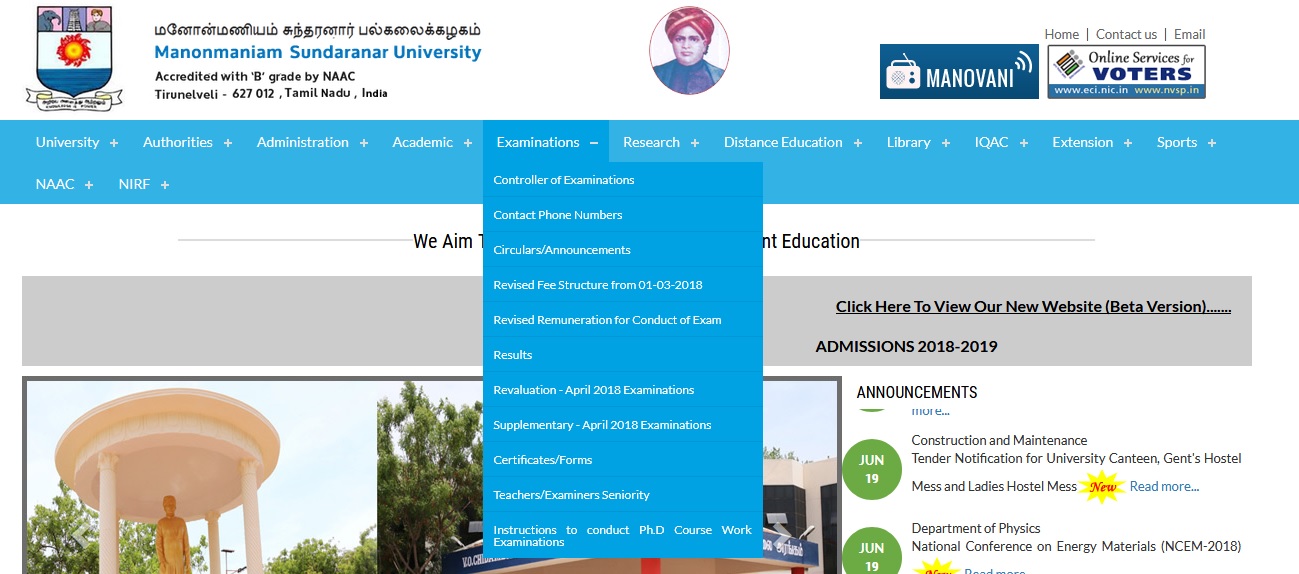DEC14 Indian & Other Common Wealth Literatures In English MA Question Bank : msuniv.ac.in
Name of the University : Manonmaniam Sundaranar University
Department : English
Degree : M.A
Subject Code/Name : DEC 14/Indian And Other Common Wealth Literatures In English
Year : I
Website : msuniv.ac.in
Document Type : Question Bank
Download Model/Sample Question Paper :
Apr 2012 : https://www.pdfquestion.in/uploads/msuniv.ac.in/7719-2012IndianandotherCommonwealthLitratureinEnglish.pdf
Apr-2014 : https://www.pdfquestion.in/uploads/msuniv.ac.in/7719-INDIANANDOTHECOMMONWEALTH.pdf
MS University Common Wealth Literatures English Question
Sub. Code : DEC 14
M.A. DEGREE EXAMINATION, NOVEMBER 2013.
First Year — Non- Semester
Related : Manonmaniam Sundaranar University DEC23 Public Economics MA Question Bank : www.pdfquestion.in/6788.html
English — DD & CE :
Paper IV : Indian And Other Common Wealth Literatures In English
(For those who joined in July 2000-2001 onwards)
Time : Three hours
Maximum : 100 marks
PART A — (5 * 5 = 25 marks)
Answer any FIVE out of Eight in a paragraph each :
1. How does Ezekicl strike a parallel between the poet, the lover and the bird watcher?
2. Comment on the central idea of the poem “The Wild Bougainville”.
3. Describe the fear and worder felt by a child in “Night Rain”.
4. How does Mahapatra record the poverty and deprivation of the majority of people in “Dawn at Puri”.
5. What does Sri Aurobindo mean by ‘Renaissance’?
6. Write a note on the irony in ““Missing Necklace”?
7. Comment on the use of dolls in Hayavadana.
8. Discuss the subjugation of woman in Silence ! The Court is in Session.

PART B : (5 × 15 = 75 marks)
Answer any FIVE out of Eight as essays. :
9. Bring out the significance of the title “The Old Playhouse”.
10. Discuss the confessional elements on Ezekiel’s “Background Casually”.
11. Attempt a critique on Derek Walcott’s “Ruins of a Great House”.
12. How does Tagore discuss the present status of man in “The World Today in Wild Paper Boats”?
13. “The Indian Renaissance would be a rebirth of the soul of India” — Elucidate.
14. “Sita’s quest for her identify is an outcome of husband – wife conflict:” — Discuss.
15. How does the confusion of identifies reveal the ambiguous nature of human personality in Hayavadana?
16. Compare and contrast the character of Baroka and Lakunle.
APRIL 2014
PART A — (5 ´ 5 = 25 marks)
Answer any FIVE out of Eight in a paragraph each:
1. Bring out the paradoxical character of Bombay a illustrated in “Background casually”.
2. What aspects of Kamala Das as a poet are revealed in the poems prescribed for your study?
3. How does J.P. Clark capture the fear and wonder felt by a child in “Night Rain”?
4. Comment on Judith Wrights portrayed of female sexuality and sensuality in “Woman to Man”.
5. Enumerate Sri. Aurobindo’s views on Renaissance.
6. Examine Chinua Achebe’s views on the individual in a soceity.
7. Comment on the Mythical structure of Hayavadana.
8. Discuss the various techniques and devices employed in The Lion and the Jewel.
PART B : (5 ´ 15 = 75 marks)
Answer any FIVE out of eight as essays:
9. How does Ezekid strike a prallel between the poet, the lover and the bird watcher?
10. Kamala Das is “pre–eminently a poet of love and pain, one stalking the other through a near neurotic world” – Discuss with special reference to the poems prescribed for your study.
11. Critically evaluate Derek Walcott’s “Ruins of a Great House”.
12. Discuss the central motif of the poem “Journey to the Interior”.
13. Discuss Aurobindo’s ideas regarding Indian Renaissance.
14. Examine the identity crisis in Hayavadana.
15. How does the novel The Diviners explore the issues of race, class and sexuality?
16. Consider Vijay Tendulkar a social critic.
Growth & Development Of Yoga
Yoga for Human Excellence — (DD & CE) :
Paper I : Origin,
(For those who joined in July 2013-14 onwards)
Time : Three hours
Maximum : 100 marks
PART A : (5 × 5 = 25 marks)
Answer any FIVE questions out of Eight. :
1. Yoga is an Art — Describe.
2. Raja Yoga — Discuss in detail.
3. Describe the eight aspects of Pathanjali Yoga.
4. Yoga in Christianity — Explain.
5. Elaborate the three main principles of Siddha.
6. Explain why Science and Religion should Units.
7. Ramalinga Vallalar — Discuss in detail.
8. Briefly explain the principles of Vethathiri Maharishi.
PART B : (5 ´ 15 = 75 marks)
Answer any FIVE questions out of Eight. :
9. Describe in detail about Karma Yoga.
10. Define origin and history of Yoga.
11. Describe the greatness of Indian Philosophy.
12. Explain the four truths said by Buddhism.
13. Describe Yoga an ancient Tamil concepts.
14. Describe the principles and systems of execution Vethathiri Maharishi.
15. Explain Vallalar Philosophy of divinity and principles of Caste and Religion.
16. Describe the Theological reflections of Bharathiyar.
I need MSU Distance Education M.A English syllabus and last three year model question paper.
This question bank is very useful to study.